Directions (1-4): In every question two rows are given and to find out the resultant of a particular row you need to follow the given steps:
Step I: If an odd number is followed by an even number, then the resultant will be the multiplication of two numbers.
Step II: If an even number is followed by an odd number, then the resultant will be the absolute difference of the two numbers.
Step III: If an odd number is followed by an odd number (but not prime numbers), then the resultant will sum of the square of tens digit of both the numbers (in a number 75-5 is the unit digit and 7 is the tens digit)
Step IV: If an even number is followed by an even number, then the resultant will be the cube of the unit digit of the bigger number of them (in a number 75-5 is the unit digit and 7 is the tens digit).
Step V: If an odd number is followed by a prime number except 2, then the resultant will be the number formed by those two numbers i.e., 1st number is written besides the second number.
For e.g., if 1st number is 3 and the 2nd number is 5. So, the resultant will be 35.
Q1. What will be the sum of the resultant of both the rows?

(a) 44
(b) 52
(c) 92
(d) 08
(e) None of these
Q2. What is the resultant of row 2, if A is the resultant of Row 1?

(a) 288
(b) 128
(c) 271
(d) 216
(e) None of these
Q3. What will be the sum of the unit digits of the resultants of both the rows?

(a) 13
(b) 10
(c) 15
(d) 18
(e) None of these
Q4. What is the resultant if we multiply 2 in resultant of the row given below?
![]()
(a) 2122
(b) 122
(c) 1886
(d) 2458
(e) None of these
Directions (5-7): In every question two rows are given and to find out the resultant of a particular row you need to follow the following steps:
Step I: If even number is followed by the number divisible by 3 then the resultant will be the addition of 4 with the difference of both the numbers.
Step II: If even number is followed by the number not divisible by 3 then the resultant will be smallest number among the two numbers.
Step III: If odd number is followed by a prime number, then the resultant will be the addition of both the numbers.
Step IV: If prime number is followed by any number (but not prime), then the resultant will be the difference of greater number with 5.
Step V: If odd number is followed by any number (both are not prime numbers), then the resultant will be the difference of both the numbers.
Q5. What is the difference of resultant of both the rows?

(a) 9
(b) 10
(c) 11
(d) 2
(e) None of these
Q6. What is the resultant of first row if X is the resultant of second row?

(a) 5
(b) 9
(c) 12
(d) 15
(e) None of these
Q7. What is the sum of resultant of both the rows?

(a) 13
(b) 14
(c) 15
(d) 16
(e) None of these
Directions (8-11): There are two rows given and to find out the resultant of a particular row, we need to follow the particular steps:
Step I: If an even number is followed by an odd number, then resultant will be the sum of both the numbers.
Step II: If an odd number is followed by an even number, then the resultant will be the difference of both the numbers.
Step III: If an odd number is followed by a square number (but not even number), then the resultant will be the multiplication of both the numbers.
Step IV: If an even number is followed by another even number which is greater than 10, then the resultant will be the difference of both the numbers.
Q8. What is the difference of resultant of both the rows?

(a) 56
(b) 60
(c) 64
(d) 62
(e) None of these
Q9. What will be the multiplication of resultant of both the rows?

(a) 26
(b) 48
(c) 63
(d) 76
(e) None of these
Q10. What is the sum of resultant of the both the rows?

(a) 156
(b) 153
(c) 158
(d) 154
(e) None of these
Q11. What will be the resultant of row I, if B is the resultant of row II?

(a) 87
(b) 45
(c) 59
(d) 95
(e) 42
Directions (12-15): In every question two rows are given and to find out the resultant of a particular row you need to follow the given steps:
Step I: If an odd number is followed by an even number, then the resultant will be the sum of both numbers.
Step II: If an even number is followed by an odd number, then the resultant will be the absolute difference of the both numbers.
Step III: If an odd number is followed by odd number, then the resultant will sum of the squares of both numbers.
Step IV: If an even number is followed by an even number, then the resultant will be the square of the tens digit of the smaller number of them (in a number 34-4 is the unit digit and 3 is the tens digit).
Q12. What is the sum of resultant of the both the rows?

(a) 635
(b) 636
(c) 645
(d) 656
(e) None of these
Q13. What is the half of the difference of resultant of both the rows?

(a) 65
(b) 63
(c) 60
(d) 50
(e) None of these
Q14. If we multiply the resultant of row 1 by 2 then, what is the difference of resultant of both the rows?

(a) 9
(b) 7
(c) 10
(d) 12
(e) None of these
Q15. What will be the multiplication of resultant of both the rows?


(a) 288
(b) 298
(c) 169
(d) 285
(e) None of these
Solutions
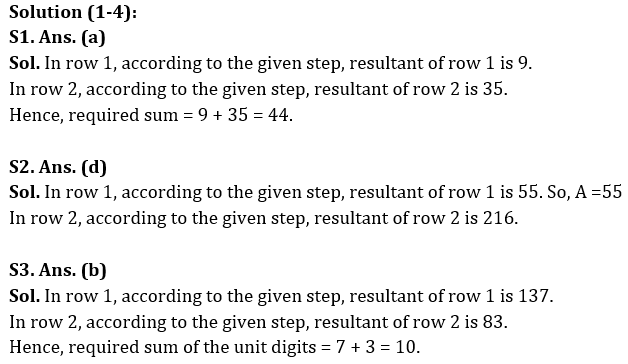
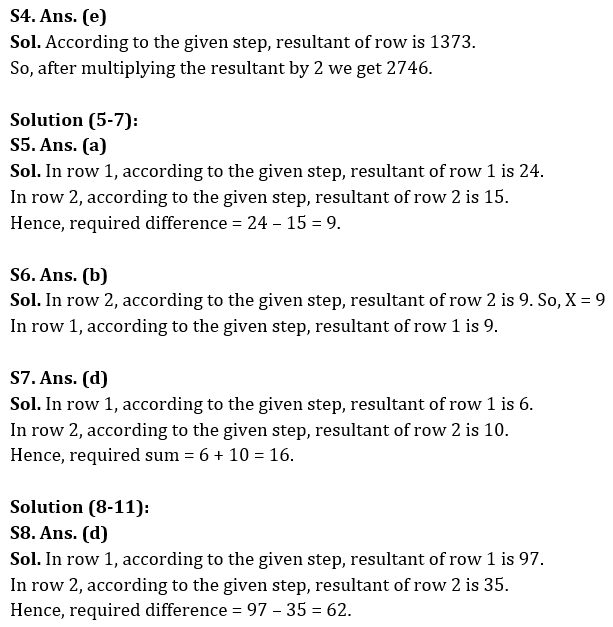
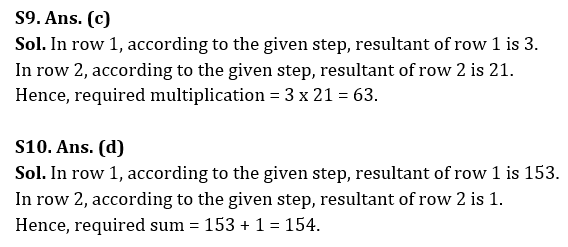
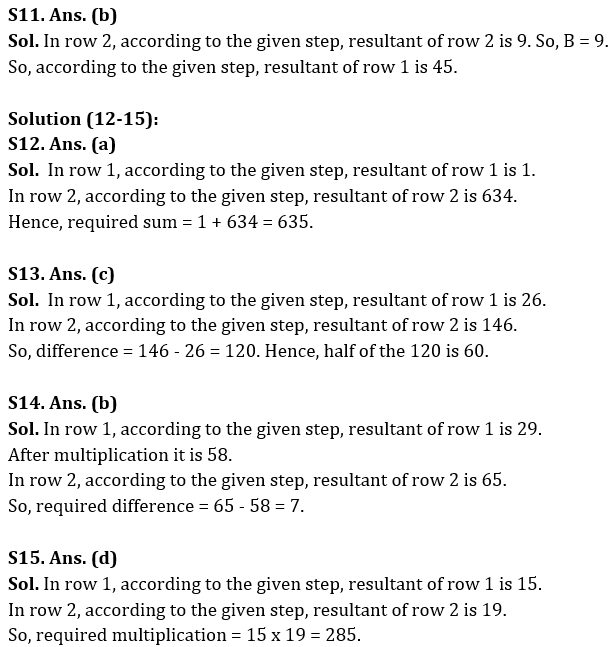



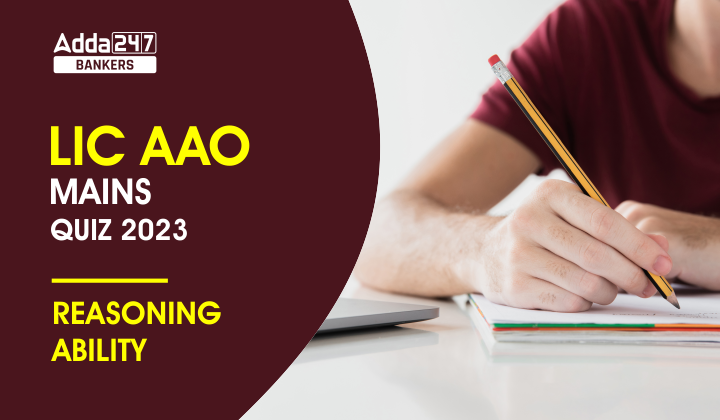

 GA Capsule for SBI Clerk Mains 2025, Dow...
GA Capsule for SBI Clerk Mains 2025, Dow...
 The Hindu Review October 2022: Download ...
The Hindu Review October 2022: Download ...
 SBI Clerk Prelims Result 2025 Out, Direc...
SBI Clerk Prelims Result 2025 Out, Direc...







